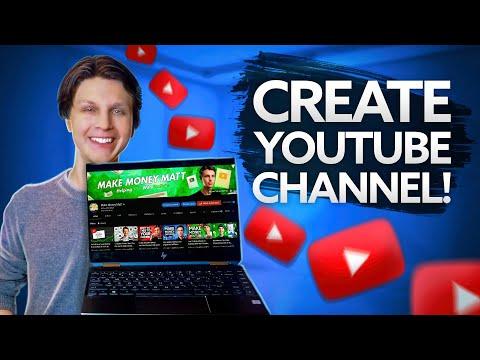Starting a YouTube channel was something I had always thought about but never took seriously until recently. I had watched countless YouTubers and admired their ability to create content that resonated with so many people. It seemed like a fun way to share my passions and potentially even build a following. But when I finally decided to take the plunge, I found myself overwhelmed with the process. Where do I even begin? What equipment do I need? How do I ensure my channel stands out among the millions of others?
The first step I took was to define my niche. I realized that having a clear focus was crucial. I wanted to share my love for cooking, but not just any cooking—specifically, I wanted to showcase quick, easy recipes for busy professionals. This decision helped me shape my channel’s identity and content strategy.
Next, I invested in some basic equipment. I started with a decent camera and a microphone that didn’t break the bank. While it’s tempting to go for high-end gear right away, I found that starting with good but affordable equipment was sufficient for creating quality content. Lighting was also important, so I used a couple of softbox lights to ensure my videos looked bright and professional.
Creating a YouTube channel involves more than just recording videos; I needed to set up my channel properly. I began by signing in to YouTube with my Google account and creating a new channel. I carefully chose a channel name that reflected my niche and was easy to remember. Then, I worked on designing my channel art, including a logo and banner. I used free tools like Canva to create visually appealing graphics that would attract viewers.
When it came to video content, planning was essential. I drafted a content calendar, mapping out what topics I wanted to cover in each video. This helped me stay organized and consistent, which is key for growing a channel. I started scripting my videos to ensure I covered all the necessary points while keeping the content engaging.
Recording the videos was both exciting and challenging. I learned the importance of speaking clearly and enthusiastically, as it made a big difference in how engaging my videos were. I also experimented with different editing styles, using software like Adobe Premiere Pro to make my videos polished and professional. Editing took a lot of time, but it was crucial for making my content enjoyable to watch.
Uploading videos to YouTube involved more than just hitting the publish button. I made sure to write compelling titles and descriptions that included relevant keywords. This was important for search engine optimization (SEO), which helps your videos appear in search results and attract more viewers. I also created eye-catching thumbnails that would entice people to click on my videos.
Promoting my channel was another important step. I shared my videos on social media platforms and engaged with communities related to my niche. I joined forums and groups where I could share my content with people who might be interested in it. Networking with other YouTubers was also beneficial; collaborations can help both channels grow by exposing each other’s audiences to new content.
Analyzing my channel’s performance was crucial for understanding what worked and what didn’t. I regularly checked YouTube Analytics to track views, watch time, and audience demographics. This data provided valuable insights into what type of content resonated with my audience and helped me adjust my strategy accordingly.
As I continued to create content and learn from my experiences, I realized that patience and persistence were key. Growing a YouTube channel takes time and effort, but staying consistent and continually improving my content made a big difference. I focused on providing value to my viewers and building a community around my channel.
In the end, starting and growing my YouTube channel was a rewarding journey. It required a lot of hard work and learning, but it was worth it to see my channel evolve and reach an audience that appreciated my content. If you’re thinking about starting your own YouTube channel, remember that it’s a process that involves careful planning, consistent effort, and a willingness to adapt and learn.
